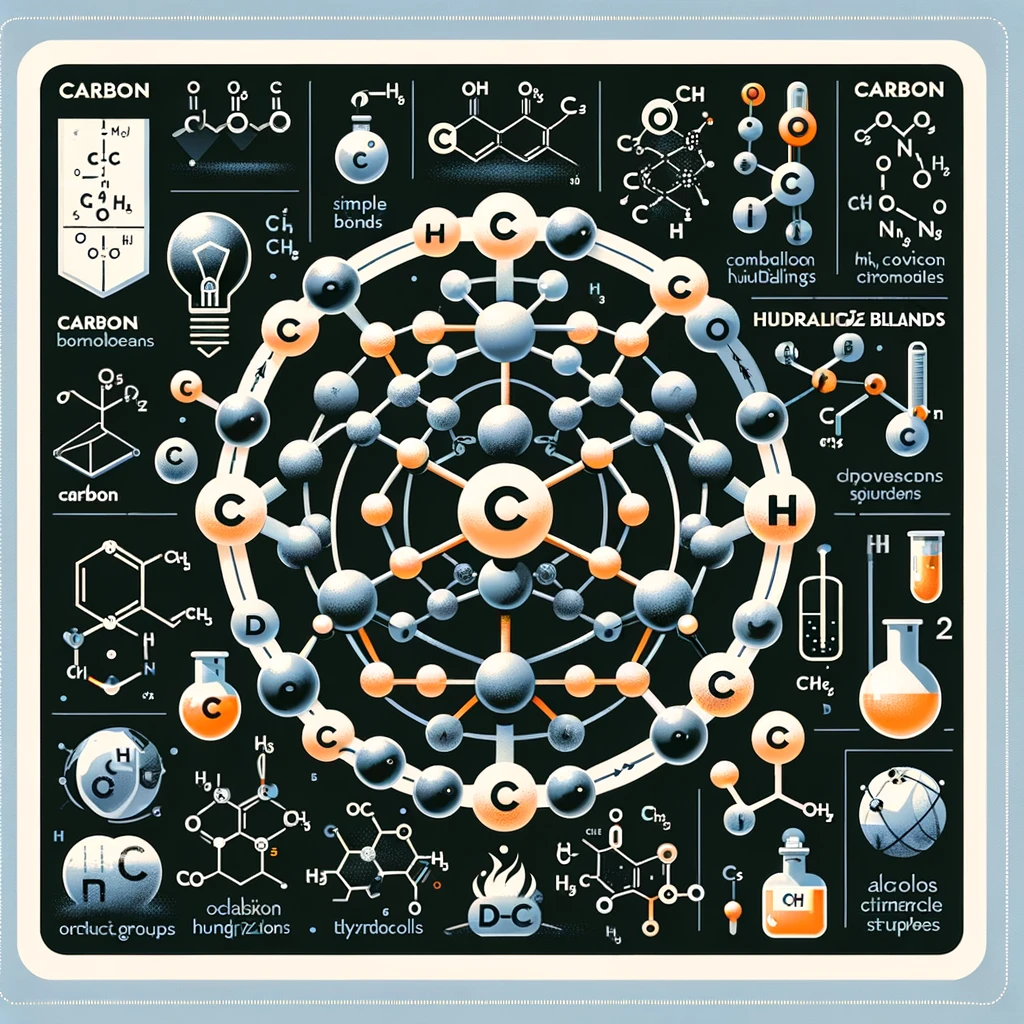
Decoding Carbon and Its Compounds: An In-depth Guide for Class 10 Science Scholars

Delving into Carbon and Its Compounds
Introduction
Carbon is an extraordinary element that forms the backbone of all known life on Earth. Its ability to form stable bonds with many elements, including itself, gives rise to a vast number of compounds. This chapter delves into the versatile world of carbon and its compounds, highlighting their properties, reactions, and the pivotal role they play in our lives.
Section 1: Unique Properties of Carbon
Carbon’s unique ability to catenate (form chains of identical atoms) and its tetravalency (forming four covalent bonds) underpin the complexity and diversity of organic compounds.
Bonding and Shapes
- Covalent Bonding: Carbon forms strong covalent bonds with other elements and with itself, leading to a wide variety of molecular structures.
- Hybridization: The concept of hybridization explains the molecular geometry of carbon compounds, including linear, trigonal planar, and tetrahedral shapes.
Section 2: Classification of Carbon Compounds
Carbon compounds, or organic compounds, are categorized based on their functional groups, which determine their chemical reactivity and properties.
Hydrocarbons
- Alkanes, Alkenes, and Alkynes: Simple hydrocarbons differ in their types of bonds (single, double, triple) and have distinct properties and reactions.
- Aromatic Hydrocarbons: Compounds containing benzene rings, known for their stability and unique reactions.
Functional Groups
- Alcohol, Aldehydes, Ketones, Carboxylic Acids, and Esters: Each functional group imparts specific characteristics and reactivity patterns to the molecules.
Section 3: Chemical Reactions of Carbon Compounds
Carbon compounds undergo various types of reactions, showcasing the rich chemistry of organic molecules.
Combustion
- Complete combustion of hydrocarbons produces carbon dioxide and water, releasing energy.
Substitution and Addition Reactions
- Characteristic reactions of alkanes and alkenes, respectively, demonstrating the diversity of organic synthesis.
Esterification and Saponification
- The formation of esters from acids and alcohols and the reverse process, saponification, highlight the interconversion of organic compounds.
Section 4: Importance of Carbon Compounds
Carbon compounds are integral to biological molecules like carbohydrates, proteins, lipids, and nucleic acids, underscoring the essence of life processes. They also have vast industrial applications, from fuels and plastics to pharmaceuticals and dyes.
Conclusion
The study of carbon and its compounds opens up a world of chemical diversity and potential. Understanding these compounds not only illuminates the fundamentals of organic chemistry but also unveils the molecular basis of life and the myriad applications in technology.
Call to Action
Engage in laboratory experiments to observe the properties and reactions of various carbon compounds. Explore the role of these compounds in everyday products and their environmental impact.